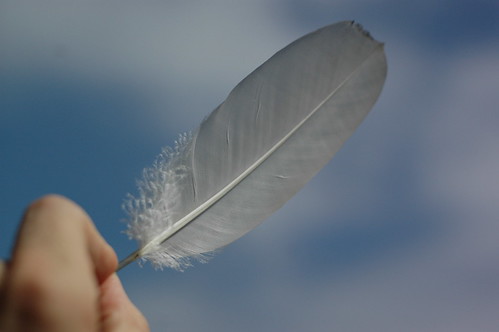 lady named Mimi was up at midnight working on her project. Her class’s project was to create the world’s loudest gragger that would make such a loud sound that it would drown out Haman’s name forever.
lady named Mimi was up at midnight working on her project. Her class’s project was to create the world’s loudest gragger that would make such a loud sound that it would drown out Haman’s name forever.Think Mimi, think, she told herself. What is the loudest noise you’ve ever heard? Suddenly the idea came to her. The next day in class, she got up on a chair and announced, “I know how we are going to make the world’s loudest gragger!” She told them the plan: Everyone would collect as many stones and rocks as possible and put them in a big bass drum in the center of town. When Mimi picked it up and shook it during the megillah reading, the noise would be earsplitting.
For three days the people of Chelm collected stones and rocks. Even the littlest children collected pebbles. And so the drum filled quickly.
As the sun set just before the start of Purim, Mimi and her friends from school met at the town square to carry the world’s loudest gragger to synagogue for the reading. Mimi went to lift the drum, but even after struggling and straining and inviting her friends to help, they were unable to move it.

Just as everyone started to get mad, Mimi had a brainstorm. “Ah! Remember the riddle we learned last week? What weighs more: a pound of rocks or a pound of feathers?! Well, they both weigh a pound! If they weigh the same, then it shouldn’t matter what we fill the drum with! So let’s fill the drum with feathers and we’ll be able to carry it to synagogue.”
They did as she said. When they arrived at the temple, the adults had already begun the megillah reading. Mimi could feel the eyes of the whole town watching her. As the rabbi neared the first mention of Haman’s name, he nodded significantly toward to the world’s loudest gragger. Mimi hoisted the drum into the air and shook it with all her might and…
Nothing! Not a peep! Not a sound! The gaze of the congregation turned angry. The people of Chelm were speechless. The people of Chelm were furious. They people of Chelm screamed and stomped their feet so loudly that the ground shook. The earth trembled. In fact, Haman’s name was entirely drowned out!

“Shh!” the rabbi cried. “You’re so loud, I can’t even hear myself think.”
The announcement stopped the crowd cold…the announcement made the citizens of Chelm all realize what had just happened. “Mimi did it!” they cheered, embracing her. “We made the loudest sound ever!”
This Purim, this Shabbat, there is much in our world that requires us to scream and stomp. Not to scream and stomp in frustration or in an immature whine. No, there are issues that require us to scream and stomp in dignified protest: international violence, hunger, erosion of women’s rights.
The question is not whether these things should be addressed, they should. The question is how we sound the drum of indignation. Like many of you, I often post my opinions electronically on Facebook and through tweeting. I post articles I find compelling and I share YouTube clips that tug at my heartstrings. Often these postings are forwarded and commented on. Sometimes someone offers a respectful challenge but more often it’s a thumbs up for a “like.” I find that my Facebook friends generally seem to agree with me.
Or, if online isn’t your method, we tend to express our dissatisfaction about politics or society to our friends and family. We talk about the latest controversy over coffee and the NYTimes or lunch with old friends. Our friends may challenge us, but generally we seem to agree on the big issues. That’s why we’re friends, after all!
This is all great. It is great that we engage in these conversations and immerse ourselves in the goings-on of the world around us. The first step in making a difference is to be informed and we do that well.
The challenge is in what to do next. I fear that once we are engaged by an issued, we step into a sort of echo chamber, where we chat, post and interact with only like-minded folks and do nothing more. Sure, I have an opinion on something, and yes, it is cathartic to release that opinion into the wild, but what good does it do when I throw it out there just to get a thumbs up from the “like” button?
In talking about how to take one’s indignation to the next level, NYTimes columnist David Brooks talks about the importance of mobilizing with others. To express one’s personal indignation and just that, is, according to him: “just a feeble spasm.” To actually make your voice worth something, he offers that: “effective rebellion isn’t just expressing your personal feelings. It means replacing one set of authorities and institutions with a better set of authorities and institutions. Authorities and institutions don’t repress the passions of the heart, the way some young people now suppose. They give them focus and a means to turn passion into change.” His suggestion: find an institution of like minded folks and work with them to actually make a difference.
We may be wary of lobbying groups and non-profit organizations. We like to believe in the power of the individual – but unless that individual is placed in partnership with another, it is just one voice into the wind, rather than a whole community of people stomping and hollering.
There is a lot this Purim season to get riled up about. The tension between Iran and Israel finally made the front page this week. Will you join AIPAC or JStreet in promoting Israel’s interests?
925 million people go hungry across the world. Will you fill out that Mazon card that came in your temple Purim basket?
Birth control has come under attack. Will you support Planned Parenthood in teaching young people that they can be safe and healthy in regards to their bodies?
The list of social ills is easy to cultivate, but the course of action for your particular concern is harder to determine. A good first stop is a non-profit organization aligned with your values. Yes, they want you to give money, but you can also attend a conference or suggest a speaker we can bring to Woodlands. Join a walk or petition a certain issue.
As much as we wish for it, there isn’t going to be one leader or one siren or one speech or one tweet that is going to address our concerns in full. But as a community, we can stomp and yell and protest and add our voices to others’ concerns. May we be blessed with the creativity to find a way out of the echo chamber. May we have the patience to hear the other side and the courage to engage with it. Open and motivated, may we stamp out the evil name of Haman and all the generations of Amalek that promote hate among us. This post-Purim season, may we form bonds modeled after the teamwork of Mordechai and Esther and build a world we can be proud of.












